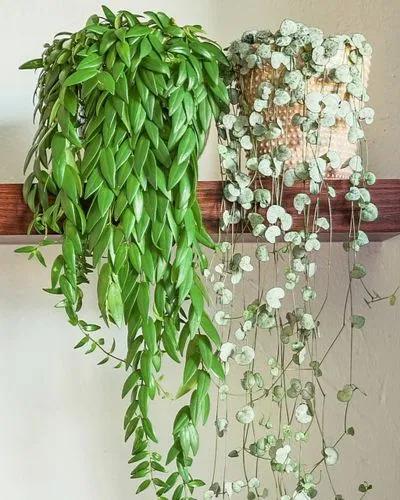Monoecious shrubs or small trees, glabrous throughout, the stipules small; leaves along main branches spirally arranged and reduced, distichous along ultimate branchlets, short-petiolate, simple, the blades entire; inflorescences axillary, the lower axils bearing fascicles of 3-many male flowers, the higher axils bearing solitary female flowers, the flowers lacking petals and disk; male flowers with the calyx fleshy, obovoid-turbinate, shortly 6-lobed, the stamens 3, the filaments connate into a column bearing 2-locular anthers apically, these not apiculate; female flowers with the calyx campanulate to cupuliform, 6-lobed or "toothed, persistent and sometimes accrescent, the ovary 3-locular, the walls thickened distally, each locule with 2 ovules, the stigmas small, subulate-dentiform, incurved; fruit a capsule dehiscing into 2-seeded cocci, the seeds with a somewhat fleshy testa, ventrally invaginated.
Breynia Distachia (snow Bush) Care
Breynia disticha
Other names: Monoecious Shrubs, Small Trees



Breynia are of special note in the fields of pollination biology and coevolution because they have a specialized mutualism with moths in the genus Epicephala (leafflower moths), in which the moths actively pollinate the flowers—thereby ensuring that the tree may produce viable seeds—but also lay eggs in the flowers' ovaries or in the space between the tepals and the carpel walls, from where their larvae consume a subset of the developing seeds as nourishment.[4][5] Other species of Epicephala are pollinators, and in some cases, non-pollinating seed predators, of certain species of plants in the genera Phyllanthus[6][7] and Glochidion,[8][9][10] both closely related to Breynia.[11] This relationship is similar to those between figs and fig wasps and yuccas and yucca moths.
How to Care for the Plant

Water

The watering of your bonsai must never be neglected. Apply water before the soil appears dry -- never allow the soil to become completely dry. It is a good idea to use a moisture meter until you get to know the requirements of your bonsai tree. Water should be applied until it begins running out of the holes in the bottom of your pot. It doesn’t really matter “how” you water your tree, but rather that when you are finished the tree has been well watered.

Pruning

he outer and bottom most fourth of the tree's root mass should be removed. This is done by raking the soil away, then pruning back the roots. In most cases, it is not good to prune back more than one fourth of the tree's root mass. After this, the tree can be placed back in its original pot or into another. The pot should have screen placed over the drainage holes. Then a thin layer of small gravel is placed in the bottom of the pot for drainage purposes. On top of this gravel is placed the new fresh soil. Place a layer of well-draining soil which is sufficient enough to elevate the tree to its previous height in the pot. After placing the tree back in the pot, the area left vacant by the pruned root mass should be filled in with fresh soil. This fresh soil should be worked in around and under the root mass in such a manner as to avoid leaving any air pockets.

Fertilizer

Fertilizing is also necessary if your bonsai is to remain healthy and beautiful. Since your bonsai is growing in such a small amount of soil it is necessary to replenish the soil's supply of nutrients periodically. Any general-purpose liquid fertilizer will do fine and is available at most garden centers. We suggest that fertilizers be used at half their recommended strength. Fertilizer should be applied at least once a month except during winter. Your bonsai will also respond well to foliar feeding, with a water-soluble fertilizer applied every other month as a spray.

Sunlight

The Snowbush will thrive indoors in high light and appreciates being kept outdoors in either full or partial sunlight during the spring and summer.

Soil

In most cases, the potting process is easy and safe if performed properly and at the right time of the year. Repotting should be done in mid-summer. The tree, along with all of its soil, should be removed from the pot. The outer and bottom most fourth of the tree's root mass should be removed. This is done by raking the soil away, then pruning back the roots. In most cases, it is not good to prune back more than one fourth of the tree's root mass. After this, the tree can be placed back in its original pot or into another. The pot should have screen placed over the drainage holes. Then a thin layer of small gravel is placed in the bottom of the pot for drainage purposes. On top of this gravel is placed the new fresh soil. Place a layer of well-draining soil which is sufficient enough to elevate the tree to its previous height in the pot. After placing the tree back in the pot, the area left vacant by the pruned root mass should be filled in with fresh soil. This fresh soil should be worked in around and under the root mass in such a manner as to avoid leaving any air pockets. After repotting, your bonsai should be thoroughly watered. This can be achieved by submerging the entire pot in a tub of water. Moss or other ground covers can be used to cover the surface of the pot to help prevent soil erosion when watering.

Temperature

When night time temperatures drop below 50 degrees we suggest that you place the tree on a windowsill or on a table in front of one.

Container

Unless you live somewhere quite warm, you will need to treat this plant as an annual or install it in a container and move it indoors after summer. The snow bush plant can live in full to partial sun, but the best color is achieved in a bright location

Popularity

61 people already have this plant 14 people have added this plant to their wishlists
Discover more plants with the list below
Popular articles






